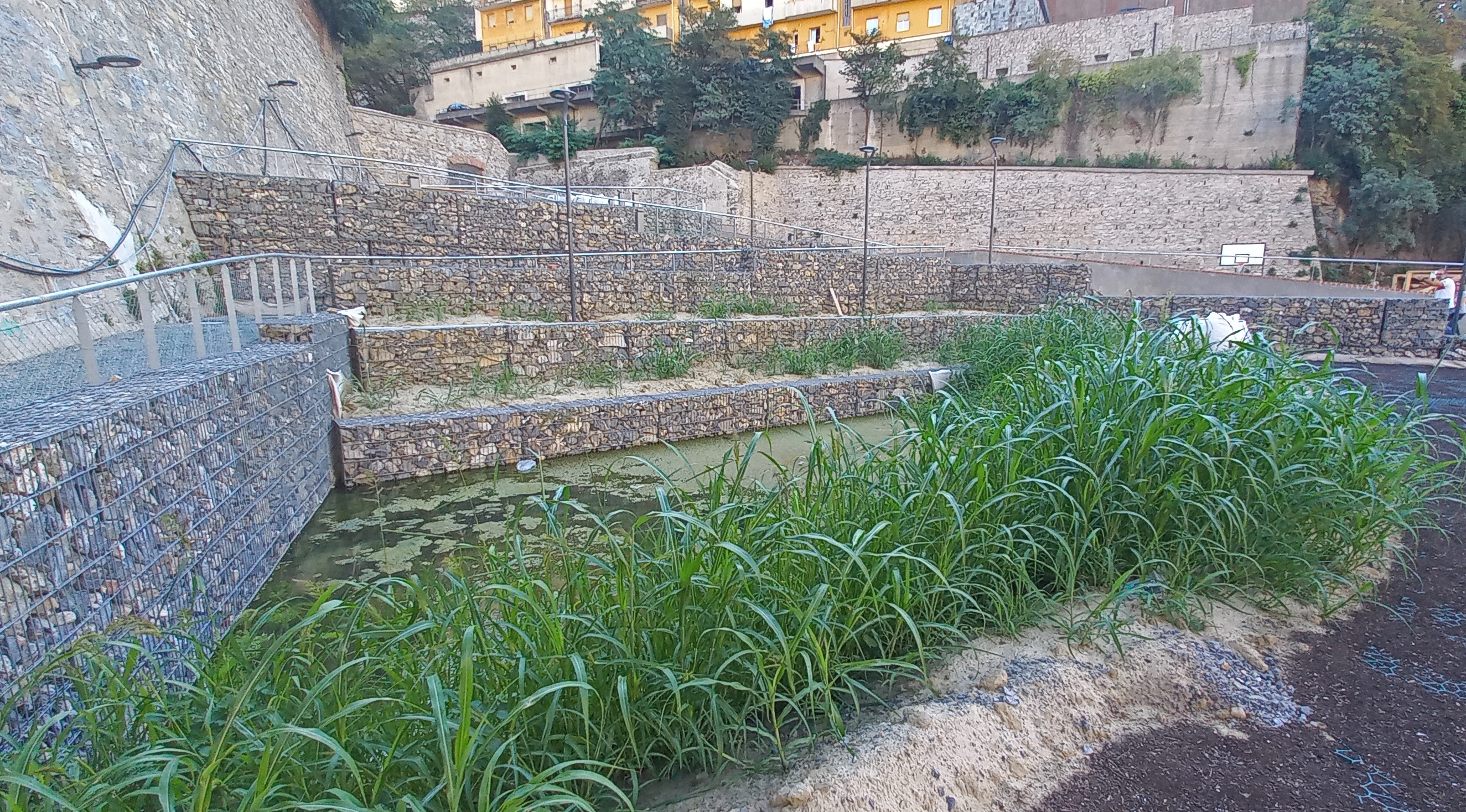Rain Garden
One of the nature-based solutions implemented in the Gavoglio urban park is the rain garden, which is located in a very important area of the park at the intersection of two valleys - here rainwater flows naturally thanks to the local topography. Additionally, there is a continuous leak from the valley’s retaining walls due to the former lake that once existed uphill. During heavy rain events, excess runoff becomes a significant issue in the area.
TECHNICAL SPECIFICATION
The rain garden has been planned in a spot where there is a continuous water flow from natural slopes uphill. This spot also forms the lower point of the steeper part of the park, thus constituting a natural catchment point for rainwater runoff. Grasses have been selected to resist both flooding and protracted drought periods. Ideally, they will recreate a natural-like hygrophilous ecosystem with local species. Two willow trees were placed at the sides to provide shade and foster a moist environment. The most visited part was reinforced with a vegetated pave in order to allow grass to survive and to keep the ground plane and stable.
The layout of the rain garden is set out in three main zones according to a gradient of accessibility and attendance: a vegetated grid pave closer to the path, which is separated by a row of benches; a meadow with trees; and a temporary pond with water-prone grasses.
The vegetated grid pave, which is 108 m2, is composed of a PP/PEHD grid with an octagonal pattern that is filled with cultivation soil, allowing grass to grow. Beneath this layer is a sand substrate, a geomembrane, and, on a deeper level, a gravel substrate. The low-maintenance meadow, which measures 65m2, is composed of a seed mix with a prevalence of Cynodon dactilon and Festuca arundinacea, which are more resilient to drought periods. In the retention area, with a surface of 44 m2, a mix of Carex appressa 15%, Carex elata 15%, Echinacea purpurea 25%, Juncus effusus 15%, Iris japonica 15%, and Iris pseudacorus 15%, is set out in groups of 8/10 plants of each kind, with a distribution of 8 plants on each square meter. A biomat made of wood fibre and polypropylene net is used as mulching layer (45 m2).

Potential for replication and upscaling
One of Genova's main problems is the high waterproofing of the soil which, combined with the city's geology characterised by steep slopes, cause many problems in the disposal of rainwater. In addition to filtering and purifying the collected water in a natural way, rain gardens also slow down the flow of surface water to reduce the risk of alluvial phenomena downstream. A rain garden is a system in transition, mainly linked to atmospheric events. Intense rain events, even of short duration, lead to the submersion of the garden and the species it contains. On the contrary, dry seasons or periods with less rain will not lead to aesthetic changes of the garden.
A rain garden conserves and filters rainwater and delivers it to the sewer system more slowly and with a constant flow to not alter the regular operation of the system itself. This particular type of garden, if used on a large scale, significantly helps to limit the phenomenon of road flooding and even manages to reduce the concentration of pollutants in the receiving water system by 30%.
Advantages:
- high flexibility
- excellent environmental integration
- discrete purification yields mainly due to filtration and adsorption mechanisms
- poor maintenance
Disadvantages:
- requires quite large surfaces








